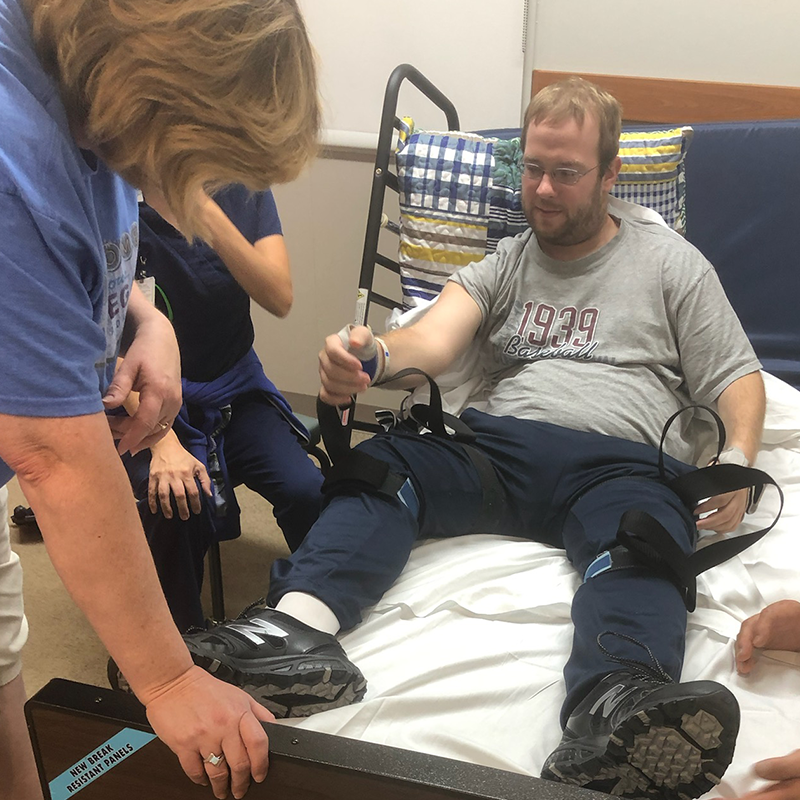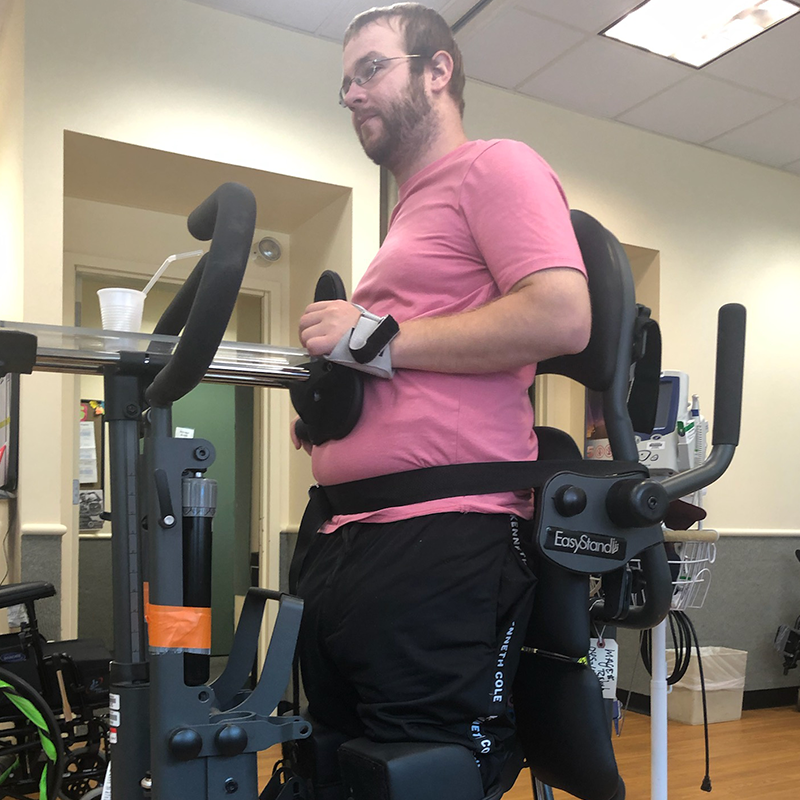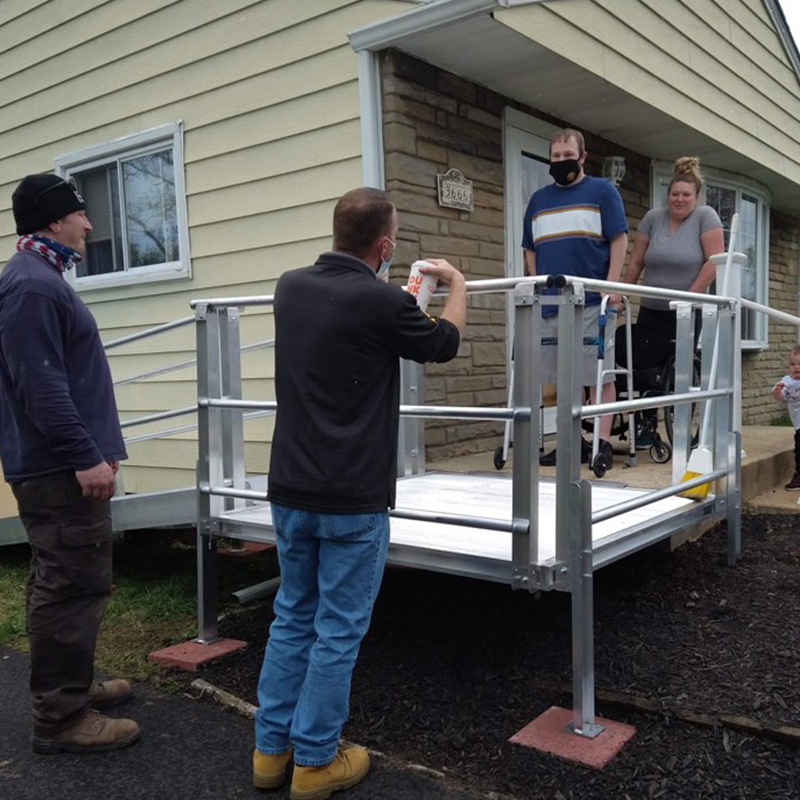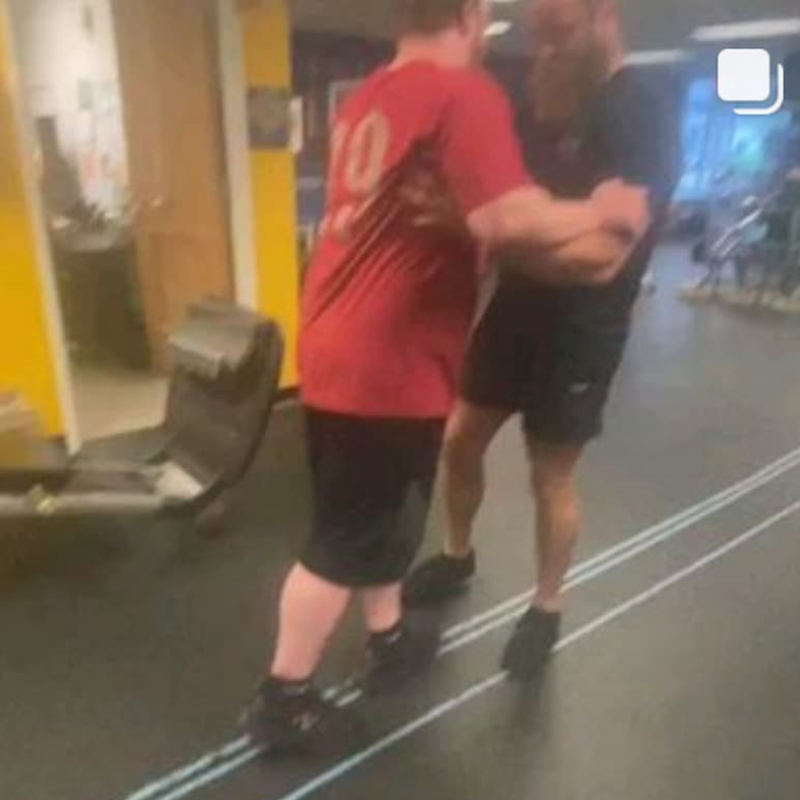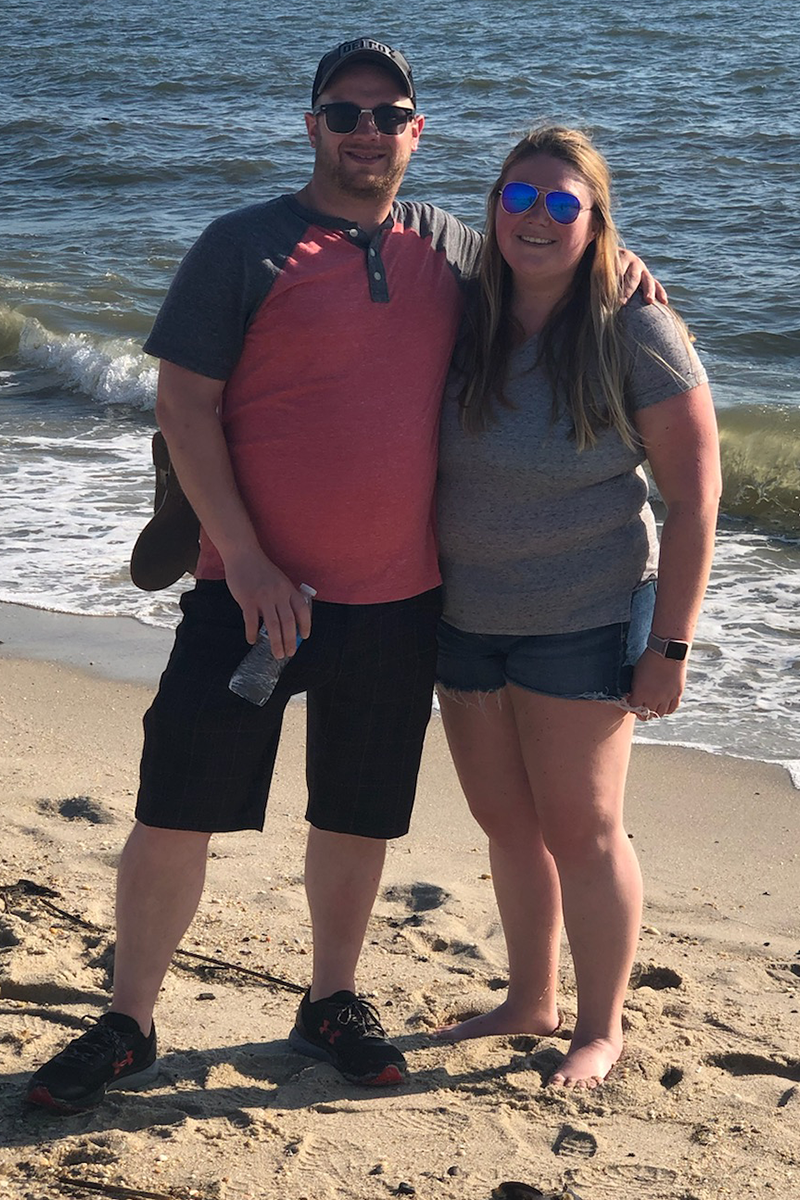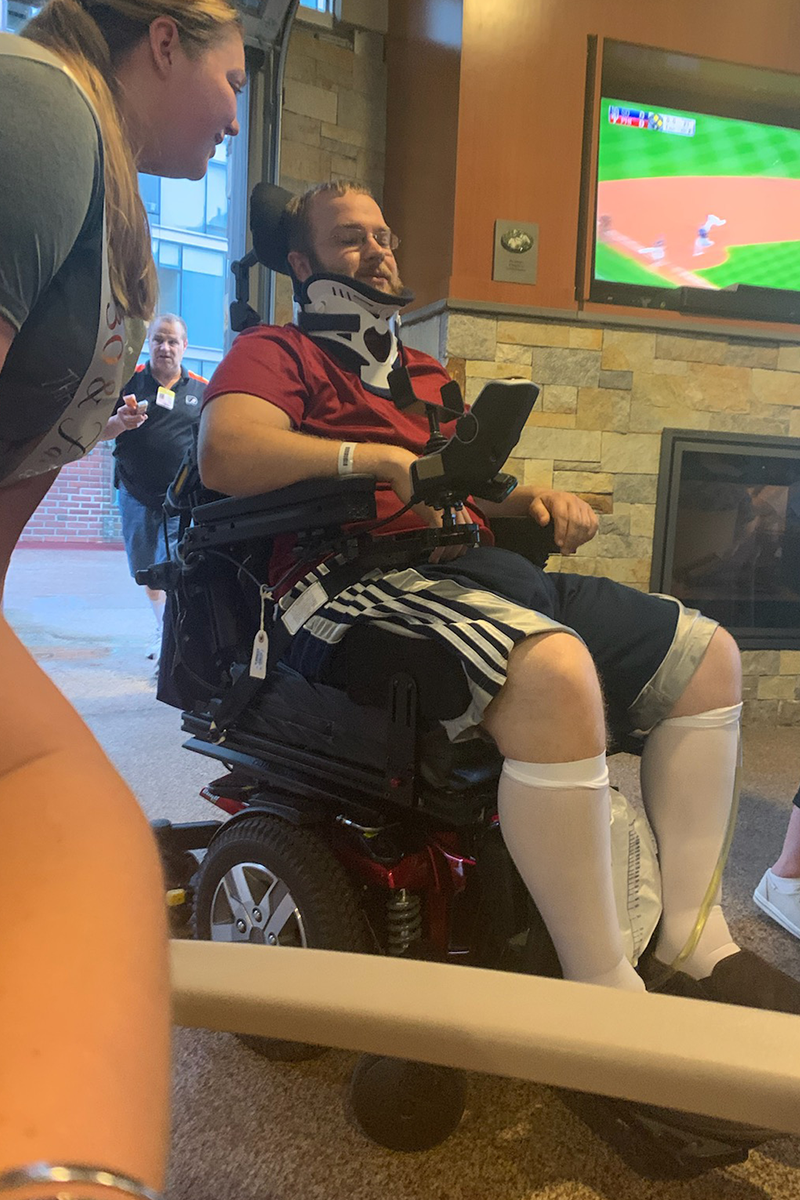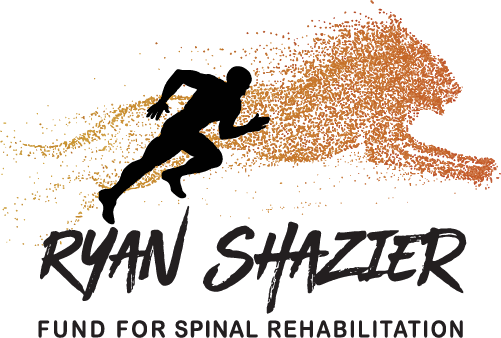For this young man, it was his Union, but for many SCI warriors, non-traditional funding is the only way to make meaningful physical progress.
In the summer of 2019, 31-year-old Steve Spatocco was “trending upward.” The Delaware County, PA native had worked hard and landed a job with a sheet metal contractor. More importantly, he had earned membership into Sheet Metal Workers’ Local Union #19. That same summer, Spatocco and his brother-in-law were enjoying a late August evening at a backyard above-ground pool.
Just a Jump
“I was on a ladder in the water,” recounts Spatocco. “And I wanted to take a little jump–just get my head wet. I pushed off the ladder too hard, and my head hit the bottom of the pool.” Spatocco found himself face-down, unable to move his arms or legs, desperate to get his head above water. His brother-in-law was quick to respond. “He got me face-up and someone else called 911,” says Spatocco. Within hours Spatocco was at the local hospital, Crozier-Chester Medical Center, in Chester, PA. “That whole time (between jumping and arriving at the hospital) I was thinking, ‘Man, this is something temporary,’” remembers Spatocco. This is a feeling often felt throughout the spinal cord injury community during the first few hours of an injury.
Hospital Moves
That was not to be. He broke the C6 vertebrae, and C4 was “a little loose.” The surgeons at Crozier operated immediately installed a cage to catch bone fragments and to stabilize Spatocco’s neck. The surgeons at Crozier also relayed to Spatocco’s family that he had suffered a spinal cord injury (SCI). Spatocco was transferred to Thomas Jefferson University Hospital in Philadelphia, a half-hour drive away. That decision was made because “Jeff,” as the hospital is known in the region, is better equipped to handle complex spinal cord injuries. There, Spatocco’s cervical spine was fused from C3-T1.
Nothing is Temporary
And then reality set in. “I realized then the paralysis was not temporary,” says Spatocco. He spent 10 days at Jeff, and then transferred to Magee Rehabilitation, which partners with Jefferson to form The Regional Spinal Cord Injury Center of the Delaware Valley. When Spatocco got to Magee, he had movement in his thumbs, and had some grip in his hands, but was still essentially paralyzed throughout his body. He had a diagnosis of ASIA B, with little to no motor movement below his injury. “I did have some (sensory) feeling,” he says, “but that was minimal.” “I spent two months at Magee,” says Spatocco. As with most insurances, he couldn’t get any more time authorized for inpatient rehab. “Needless to say, I was super nervous to go home.” (Spatocco is quick to point out that he received sufficient outpatient rehabilitation at Magee, but that was only because his Union kept him on the insurance roles, even though he was injured. “I realize I am lucky in that regard,” he says.)
Tight Quarters
At discharge time, he and his girlfriend, Lorna McSorley, lived on the second floor of an apartment building. They had to give up that apartment and move in with Spatocco’s sister and her husband. Spatocco’s mother also moved in to help with Spatocco’s full-time caregiving. “We all got along,” says Spatocco, “But it did get really tight.” Five people were now living in a three-bedroom Cape Cod house, complete with the equipment needed for Spatocco, including Hoyer lifts for transferring, wheelchair, hospital bed, etc.
Unity with the Union
Eventually, Spatocco and McSorley found a home of their own, and again, the Union Brotherhood took care of the couple. The Union members mobilized at the couple’s home, and installed ramps, and rehab aids for Spatocco using ADA specs and their own skills as craftsman. It soon became clear that Spatocco will not be able return to his hands-on sheet metal position with his employer, Ernest D. Menold, Inc., and like so many SCI warriors, he is now on full disability. However, the members of the Sheet Metal Workers’ Local Union 19 are doing for Spatocco what thousands of disabled spinal cord injury warriors would want for themselves.
Staying on the Roles
The Union has kept Spatocco on its private healthcare insurance, even though he is 2 ½ years out from his injury and not working. “That will probably end this year because I will be eligible for Medicare,” he says, “But, they’ve done so much for me.” Spatocco got a lot of functionality back, but he is still in a wheelchair full time 2 1/2 years later.
Project Walk
One resource he and McSorley, who is not only Spattoco’s now fiancée but is also his strongest disability advocate, is Project Walk in New Jersey. “They’re like a franchise, and only out of pocket, and petty expensive,” says Spatocco. Yet the Union, along with Spatocco’s sister’s Go Fund Me donation account, again came through. Spattoco’s employer, Ernest D. Menold, set up a Strides for Steve fundraiser, and through Beef and Beers, running club activities, and other continuous activities has been able to help fund Spattoco’s Project Walk rehab activities. And through regular two-hour sessions at Project Walk, Spatocco went from being wheelchair-bound, to being able to do sit-stands. “I’ve been going there for two years now,” he says. “I’m not where I want to be, but I’ve never been the guy who was able to sit still,” he chuckles. “But,” he pauses, “There’s a somberness to it too. Because (other spinal cord injury patients) people aren’t getting the help they need. So, I believe that without my Union and this insurance, I wouldn’t be where I’m at.”
All You Have to Do Is Ask
While at Magee, Spatocco couldn’t wait to get on the unit’s Functional Electronic Stimulation (FES) Bike. Spatocco asked his union to help fund an FES bike. “Lo and behold they did!” exclaims Spatocco. The Union put up $8,000, and then they helped fundraised the rest.” Now, Spatocco owns his “dream” recovery apparatus, an FES Stim bike at home. He tries to use it three days a week if he has someone to help get him onto the bike and attached to the electrode
Shalieve
Wisdom
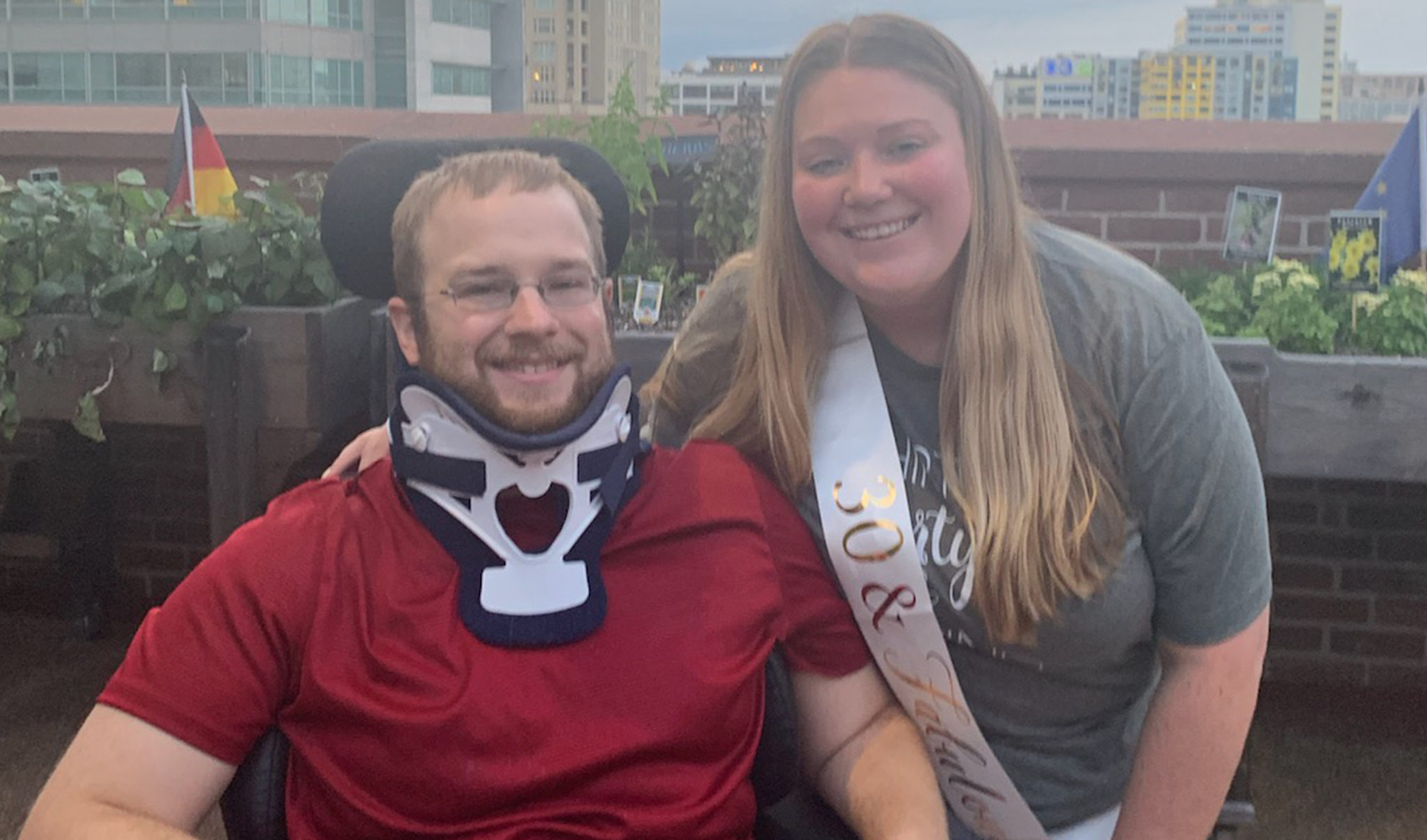
Give that Extra Hour. “Keep your spirits—don’t be that guy phoning it in. If your PT trainer asks for ‘x,’, ask if you can do x times x!” Don’t have negative thoughts and negative feelings about physical therapy.”
Live your life—Don’t let a wheelchair hold you back. “Go out, do things! The outings at Magee showed me that. Even when I don’t feel like doing something, I push myself, and once there I feel like a million bucks!”
Post your progress. “Your progress, successes and even struggles that you overcome may give some people motivation and inspiration. Once, I dragged myself into the Project Walk with my walker for the first time. It was all caught on the security camera, Project Walk posted it to their page, and it inspired a young man who was down. Also, when you post you're letting people know that their money is going to a good cause it's accountability.”

